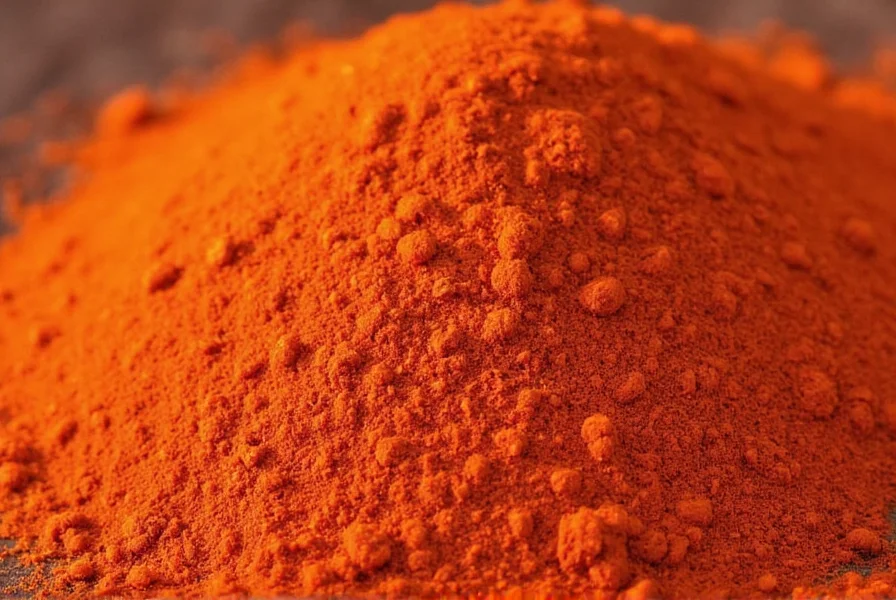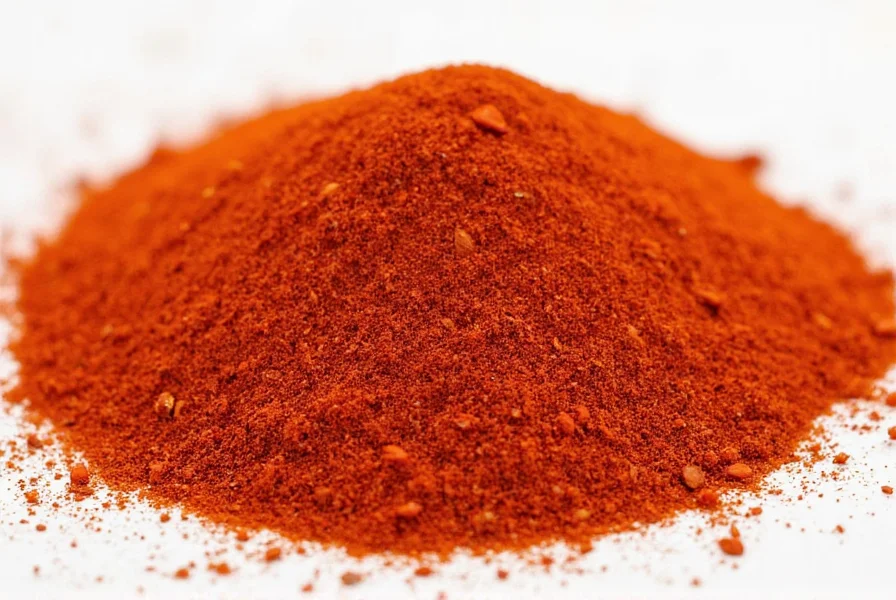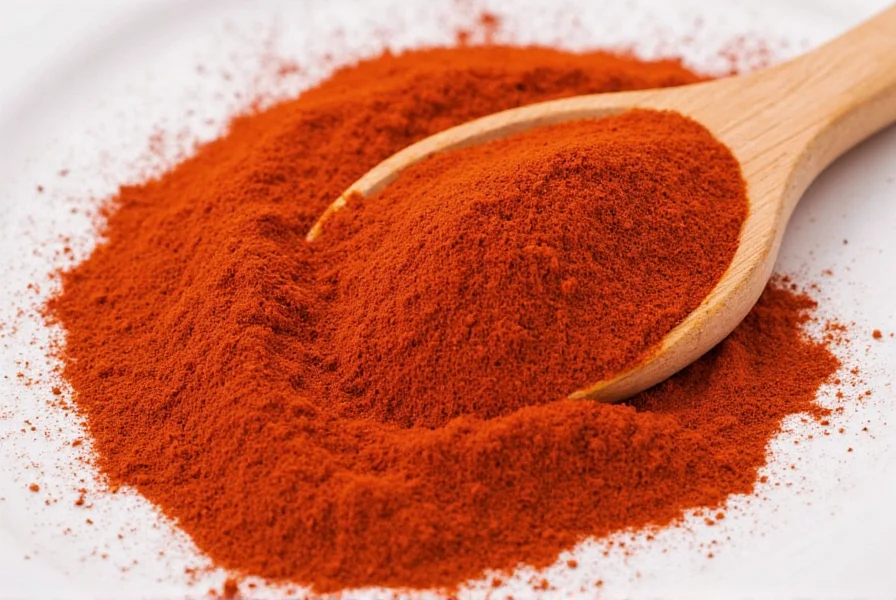When exploring is smoked paprika spicy, the answer depends entirely on which variety you're using. This versatile spice has three primary classifications that determine its heat level, making it essential to understand the differences before adding it to your recipes.
Understanding Smoked Paprika Varieties
Unlike regular paprika which is simply ground dried peppers, smoked paprika undergoes a special preparation process. Peppers are slowly smoked over oak wood fires before grinding, which imparts that distinctive smoky flavor. But the heat level varies significantly across types:
| Variety | Heat Level (Scoville) | Flavor Profile | Common Uses |
|---|---|---|---|
| Sweet Smoked Paprika | 0-500 SHU | Rich smokiness, sweet pepper notes | Paella, roasted vegetables, deviled eggs |
| Bittersweet Smoked Paprika | 500-1,000 SHU | Complex smoke with subtle bitterness | Stews, braises, marinades |
| Hot Smoked Paprika | 1,500-2,500 SHU | Noticeable heat with deep smoke | Chili, spicy rubs, chorizo |
What Determines Smoked Paprika's Heat Level
The spiciness in hot smoked paprika comes from the specific pepper varieties used in production. Spanish Pimentón de la Vera producers typically use:
- Dulce (sweet) – Made from sweet red peppers with zero heat
- Agridulce (bittersweet) – Blend of sweet and slightly spicy peppers
- Picante (hot) – Contains spicy guindilla or jalapeño peppers
When evaluating how hot is smoked paprika, remember that even hot varieties sit at the milder end of the spice spectrum. For comparison:
- Hot smoked paprika: 1,500-2,500 Scoville Heat Units (SHU)
- Chipotle powder: 2,500-8,000 SHU
- Cayenne pepper: 30,000-50,000 SHU
- Habanero: 100,000-350,000 SHU

Smoked Paprika vs Regular Paprika: Key Differences
Many home cooks wonder about the difference between smoked paprika and regular paprika. While both come from ground Capsicum annuum peppers, their production methods create distinct characteristics:
- Production – Smoked paprika is dried over wood fires; regular paprika air-dried
- Flavor – Smoked version has distinctive campfire notes; regular offers pure pepper flavor
- Color – Smoked paprika often appears slightly darker due to the smoking process
- Heat range – Both come in sweet, bittersweet, and hot varieties
When considering can you substitute smoked paprika for regular paprika, the answer depends on your recipe. In dishes where smoke flavor enhances the dish (like barbecue or stews), substitution works well. For delicate dishes like potato salad, the smokiness might overpower other flavors.
Practical Cooking Applications
Understanding what does smoked paprika taste like helps determine its best uses. The smoky-sweet profile makes it ideal for:
- Adding depth to vegetarian dishes that lack meat's natural umami
- Creating authentic Spanish and Hungarian cuisine
- Enhancing roasted vegetables without overwhelming them
- Providing subtle heat in dishes where cayenne would be too intense
For those concerned about is smoked paprika spicy enough for chili, hot smoked paprika adds pleasant warmth without dominating the dish. Many chefs blend it with a pinch of cayenne for balanced heat.

Storage and Freshness Tips
To preserve both flavor and color, store smoked paprika in an airtight container away from light and heat. Properly stored, it maintains peak quality for 1-2 years. You'll know it's lost potency when the vibrant red color fades and the distinctive aroma diminishes.
When checking does smoked paprika go bad, look for these signs:
- Faded color (from deep red to dull brown)
- Musty or cardboard-like smell instead of smoky aroma
- Clumping due to moisture exposure
Common Misconceptions Clarified
Several myths persist about this versatile spice:
- Myth: All smoked paprika is spicy – Truth: Sweet varieties contain zero heat
- Myth: Smoked paprika is just paprika with liquid smoke – Truth: Authentic versions use traditional smoking methods
- Myth: It's interchangeable with chipotle powder – Truth: Chipotle is smokier and significantly hotter
Frequently Asked Questions
Is smoked paprika spicy like cayenne?
No, even hot smoked paprika is significantly milder than cayenne. While hot smoked paprika ranges from 1,500-2,500 Scoville units, cayenne measures 30,000-50,000 units. Sweet smoked paprika contains no heat at all.
Can I use smoked paprika if I don't like spicy food?
Absolutely. Sweet smoked paprika provides all the smoky flavor without any heat. Check labels for "dulce" (sweet) varieties which contain zero spiciness while still delivering that distinctive smoked pepper flavor.
What's the difference between Hungarian and Spanish smoked paprika?
Hungarian paprika (smoked or regular) typically uses different pepper varieties that create a fruitier, slightly sweeter profile. Spanish smoked paprika (Pimentón de la Vera) undergoes traditional oak-smoking for deeper, more complex smokiness. Both come in sweet, bittersweet, and hot varieties.
Does the color indicate spiciness in smoked paprika?
No, color doesn't reliably indicate heat level. Both sweet and hot smoked paprika can appear similarly vibrant red. Always check the label for terms like "dulce" (sweet), "agridulce" (bittersweet), or "picante" (hot) to determine spiciness.











 浙公网安备
33010002000092号
浙公网安备
33010002000092号 浙B2-20120091-4
浙B2-20120091-4